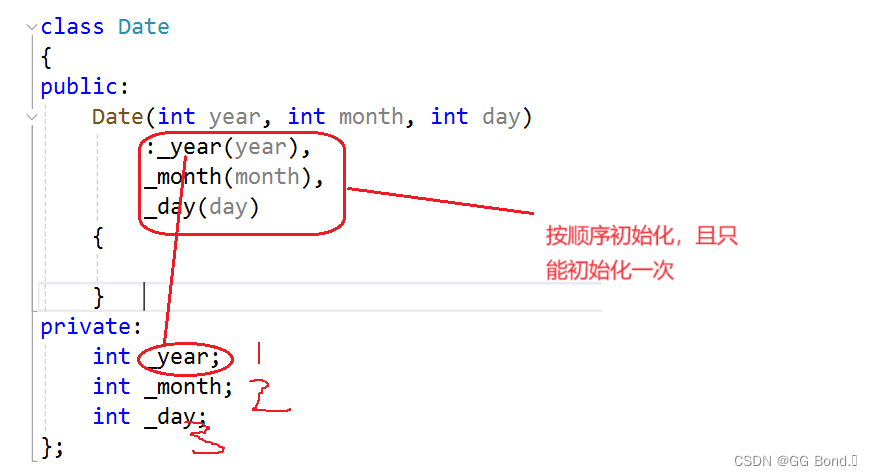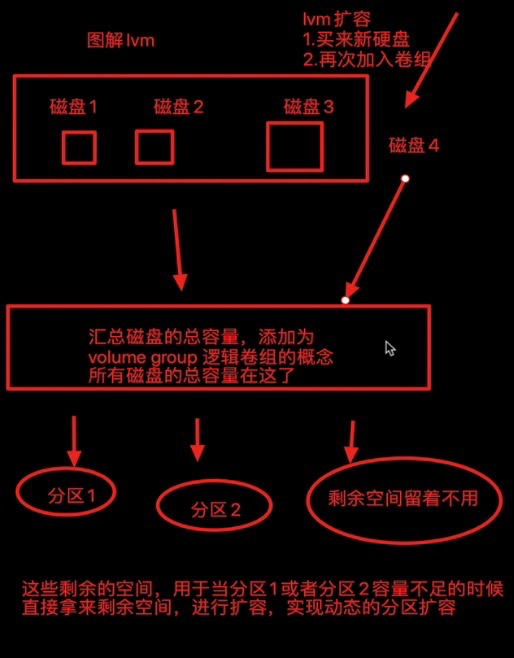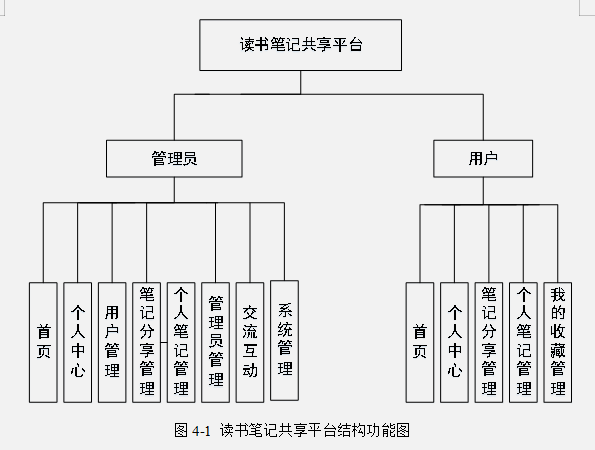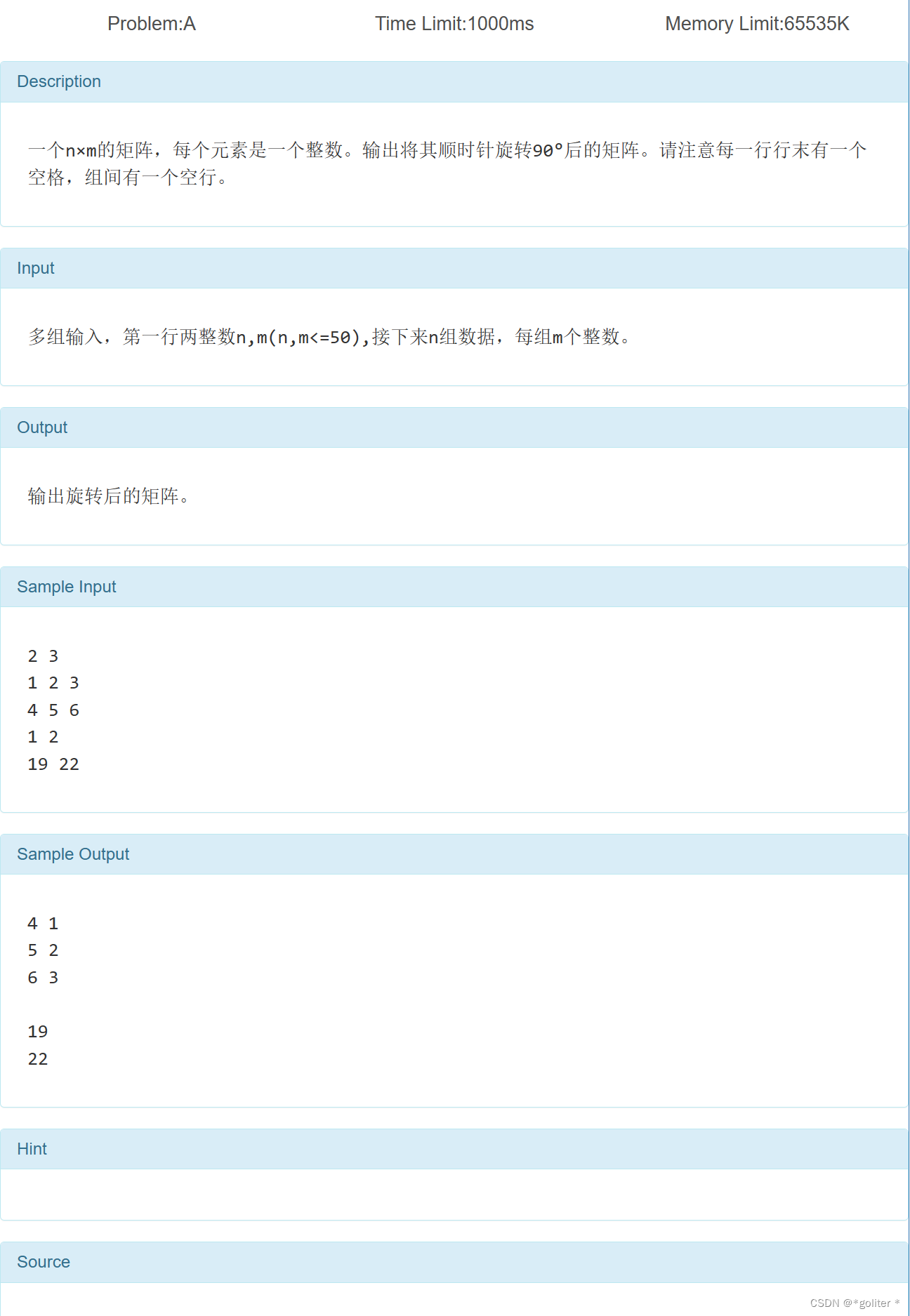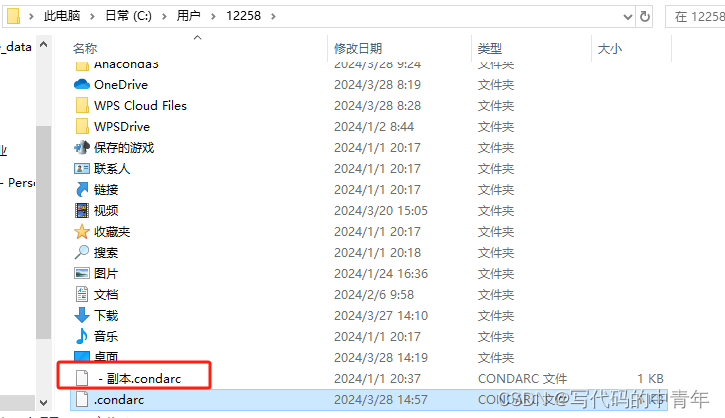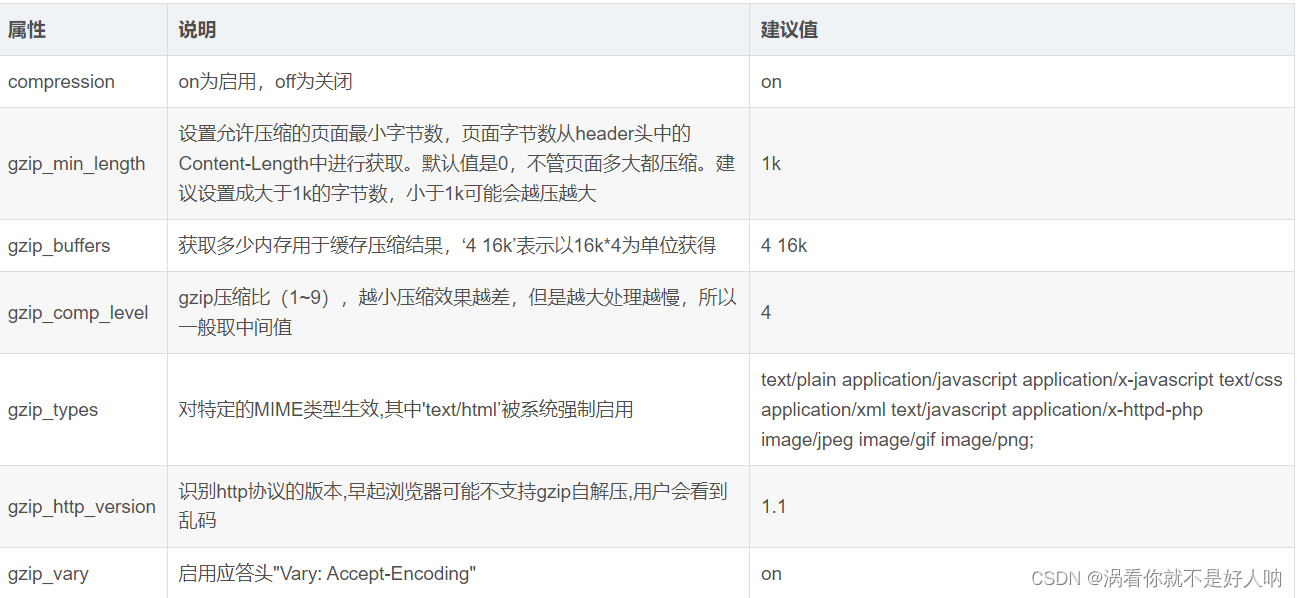c++基础学习第五天半(类和对象)
2.3、C++对象模型和this指针
2.3.1、成员变量和成员函数分开存储
在C++中,类内的成员变量和成员函数分开存储
只有非静态成员变量才属于类的对象上
//空对象占用内存空间为:1
//C++编译器会给每个空对象也分配一个字节空间,是为了区分空对象占内存的位置
//每个空对象也应该有一个独一无二的内存地址
、、、
//int m_A;//非静态成员变量,属于类的对象上
//static int m_B; // 静态成员变量,不属于类对象上
//void func() {} // 非静态成员函数,不属于类对象上
//static void func2() {}//静态成员函数,不属于类的对象上
class Person {
public:
Person() {
mA = 0;
}
//非静态成员变量占对象空间
int mA;
//静态成员变量不占对象空间
static int mB;
//函数也不占对象空间,所有函数共享一个函数实例
void func() {
cout << "mA:" << this->mA << endl;
}
//静态成员函数也不占对象空间
static void sfunc() {
}
};
int main() {
cout << sizeof(Person) << endl;
system("pause");
return 0;
}
2.3.2 、this指针概念
通过4.3.1我们知道在C++中成员变量和成员函数是分开存储的
每一个非静态成员函数只会诞生一份函数实例,也就是说多个同类型的对象会共用一块代码
那么问题是:这一块代码是如何区分那个对象调用自己的呢?
c++通过提供特殊的对象指针,this指针,解决上述问题。this指针指向被调用的成员函数所属的对象
this指针是隐含每一个非静态成员函数内的一种指针
this指针不需要定义,直接使用即可
this指针的用途:
- 当形参和成员变量同名时,可用this指针来区分
- 在类的非静态成员函数中返回对象本身,可使用return *this
class Person
{
public:
Person(int age)
{
//1、当形参和成员变量同名时,可用this指针来区分
this->age = age;
}
Person& PersonAddPerson(Person p)
{
this->age += p.age;
//返回对象本身
return *this;
}
int age;
};
void test01()
{
Person p1(10);
cout << "p1.age = " << p1.age << endl;
Person p2(10);
p2.PersonAddPerson(p1).PersonAddPerson(p1).PersonAddPerson(p1);
cout << "p2.age = " << p2.age << endl;
}
int main() {
test01();
system("pause");
return 0;
}
2.3.3、 空指针访问成员函数
C++中空指针也是可以调用成员函数的,但是也要注意有没有用到this指针
如果用到this指针,需要加以判断保证代码的健壮性
//空指针访问成员函数
class Person {
public:
void ShowClassName() {
cout << "我是Person类!" << endl;
}
void ShowPerson() {
if (this == NULL) {
return;
}
cout << mAge << endl;
}
public:
int mAge;
};
void test01()
{
Person * p = NULL;
p->ShowClassName(); //空指针,可以调用成员函数
p->ShowPerson(); //但是如果成员函数中用到了this指针,就不可以了
}
int main() {
test01();
system("pause");
return 0;
}
2.3.4、 const修饰成员函数
常函数:
- 成员函数后加const后我们称为这个函数为常函数
- 常函数内不可以修改成员属性
- 成员属性声明时加关键字mutable后,在常函数中依然可以修改
常对象:
- 声明对象前加const称该对象为常对象
- 常对象只能调用常函数
class Person {
public:
Person() {
m_A = 0;
m_B = 0;
}
//this指针的本质是一个指针常量,指针的指向不可修改
//如果想让指针指向的值也不可以修改,需要声明常函数
void ShowPerson() const {
//const Type* const pointer;
//this = NULL; //不能修改指针的指向 Person* const this;
//this->mA = 100; //但是this指针指向的对象的数据是可以修改的
//const修饰成员函数,表示指针指向的内存空间的数据不能修改,除了mutable修饰的变量
this->m_B = 100;
}
void MyFunc() const {
//mA = 10000;
}
public:
int m_A;
mutable int m_B; //可修改 可变的
};
//const修饰对象 常对象
void test01() {
const Person person; //常量对象
cout << person.m_A << endl;
//person.mA = 100; //常对象不能修改成员变量的值,但是可以访问
person.m_B = 100; //但是常对象可以修改mutable修饰成员变量
//常对象访问成员函数
person.MyFunc(); //常对象不能调用const的函数
}
int main() {
test01();
system("pause");
return 0;
}
//this指针的本质是指针常量,指针的指向是不可以修改的(Person * const this:)
// const Person * const this:
//在成员函数后面加const,修饰的是this指向,让指针指向的值也不可以修改
void showPerson()const {
//this->m_A=100:
//this=NLL://this指针不可以修改指针的指向的
}
//mutable int m_B://特殊变量,即使在常函数中,也可以修改这个值,加关键字mutable
*/
//const Person p; // 在对象前加const, 变为常对象
p.mA = 100 :
//p.m_B = 100; // mB是特殊值,在常对象下也可以修改
常对象只能调用常函数
//p.showPerson();
p.func(); // 常对象不可以调用普通成员函数,因为普通成员函数可以修改属性
/*
2.4 、友元
生活中你的家有客厅(Public),有你的卧室(Private)
客厅所有来的客人都可以进去,但是你的卧室是私有的,也就是说只有你能进去
但是呢,你也可以允许你的好闺蜜好基友进去。
在程序里,有些私有属性 也想让类外特殊的一些函数或者类进行访问,就需要用到友元的技术
友元的目的就是让一个函数或者类 访问另一个类中私有成员
友元的关键字为 friend
友元的三种实现
- 全局函数做友元
- 类做友元
- 成员函数做友元
void goodGay(Building* building)
{
cout << "好基友正在访问: " << building->m_SittingRoom << endl;
cout << "好基友正在访问: " << building->m_BedRoom << endl;
}
//告诉编译器 goodGay全局函数 是 Building类的好朋友,可以访问类中的私有内容
friend void goodGay(Building * building);
2.4.1、 全局函数做友元
```C++
class Building
{
//告诉编译器 goodGay全局函数 是 Building类的好朋友,可以访问类中的私有内容
friend void goodGay(Building * building);
public:
Building()
{
this->m_SittingRoom = "客厅";
this->m_BedRoom = "卧室";
}
public:
string m_SittingRoom; //客厅
private:
string m_BedRoom; //卧室
};
void goodGay(Building * building)
{
cout << "好基友正在访问: " << building->m_SittingRoom << endl;
cout << "好基友正在访问: " << building->m_BedRoom << endl;
}
void test01()
{
Building b;
goodGay(&b);
}
int main(){
test01();
system("pause");
return 0;
}
2.4.2、 类做友元
class Building;
class goodGay
{
public:
goodGay();
void visit();
private:
Building *building;
};
class Building
{
//告诉编译器 goodGay类是Building类的好朋友,可以访问到Building类中私有内容
friend class goodGay;
public:
Building();
public:
string m_SittingRoom; //客厅
private:
string m_BedRoom;//卧室
};
Building::Building()
{
this->m_SittingRoom = "客厅";
this->m_BedRoom = "卧室";
}
goodGay::goodGay()
{
building = new Building;
}
void goodGay::visit()
{
cout << "好基友正在访问" << building->m_SittingRoom << endl;
cout << "好基友正在访问" << building->m_BedRoom << endl;
}
void test01()
{
goodGay gg;
gg.visit();
}
int main(){
test01();
system("pause");
return 0;
}
2.4.3、成员函数做友元
class Building;
class goodGay
{
public:
goodGay();
void visit(); //只让visit函数作为Building的好朋友,可以发访问Building中私有内容
void visit2();
private:
Building *building;
};
class Building
{
//告诉编译器 goodGay类中的visit成员函数 是Building好朋友,可以访问私有内容
friend void goodGay::visit();
public:
Building();
public:
string m_SittingRoom; //客厅
private:
string m_BedRoom;//卧室
};
Building::Building()
{
this->m_SittingRoom = "客厅";
this->m_BedRoom = "卧室";
}
goodGay::goodGay()
{
building = new Building;
}
void goodGay::visit()
{
cout << "好基友正在访问" << building->m_SittingRoom << endl;
cout << "好基友正在访问" << building->m_BedRoom << endl;
}
void goodGay::visit2()
{
cout << "好基友正在访问" << building->m_SittingRoom << endl;
//cout << "好基友正在访问" << building->m_BedRoom << endl;
}
void test01()
{
goodGay gg;
gg.visit();
}
int main(){
test01();
system("pause");
return 0;
}
2.5、运算符重载
运算符重载概念:对已有的运算符重新进行定义,赋予其另一种功能,以适应不同的数据类型
2.5.1 、加号运算符重载(operator+)
作用:实现两个自定义数据类型相加的运算
// 成员函数重载本质调用
//Person p3 p1.operator+(p2):
// 全局函数重载本质调用
//Person p3 operator+(p1,p2):
//p3 = p1 + p2;
//p3 = p1 + 10;
class Person {
public:
Person() {};
Person(int a, int b)
{
this->m_A = a;
this->m_B = b;
}
//成员函数实现 + 号运算符重载
Person operator+(const Person& p) {
Person temp;
temp.m_A = this->m_A + p.m_A;
temp.m_B = this->m_B + p.m_B;
return temp;
}
public:
int m_A;
int m_B;
};
//全局函数实现 + 号运算符重载
//Person operator+(const Person& p1, const Person& p2) {
// Person temp(0, 0);
// temp.m_A = p1.m_A + p2.m_A;
// temp.m_B = p1.m_B + p2.m_B;
// return temp;
//}
//运算符重载 可以发生函数重载
Person operator+(const Person& p2, int val)
{
Person temp;
temp.m_A = p2.m_A + val;
temp.m_B = p2.m_B + val;
return temp;
}
void test() {
Person p1(10, 10);
Person p2(20, 20);
//成员函数方式
Person p3 = p2 + p1; //相当于 p2.operaor+(p1)
cout << "mA:" << p3.m_A << " mB:" << p3.m_B << endl;
Person p4 = p3 + 10; //相当于 operator+(p3,10)
cout << "mA:" << p4.m_A << " mB:" << p4.m_B << endl;
}
int main() {
test();
system("pause");
return 0;
}
总结1:对于内置的数据类型的表达式的的运算符是不可能改变的 10+10
总结2:不要滥用运算符重载*/
2.5.2、左移运算符重载
作用:可以输出自定义数据类型
//利用成员函数重载 左移运算符
p.operator<<(cout) 简化版本p<<cout
不会利用成员函数重载<<运算符,因为无法实现cout在左侧
//void operator<<(cout){}
class Person {
friend ostream& operator<<(ostream& out, Person& p);
public:
Person(int a, int b)
{
this->m_A = a;
this->m_B = b;
}
//成员函数 实现不了 p << cout 不是我们想要的效果
//void operator<<(Person& p){
//}
private:
int m_A;
int m_B;
};
//全局函数实现左移重载
//ostream对象只能有一个
ostream& operator<<(ostream& out, Person& p) {
out << "a:" << p.m_A << " b:" << p.m_B;
return out;
}
void test() {
Person p1(10, 20);
cout << p1 << "hello world" << endl; //链式编程
}
int main() {
test();
system("pause");
return 0;
}
链式重载:ostream& operator<<(ostream& out, Person& p),返回引用。
总结:重载左移运算符配合友元可以实现输出自定义数据类型
2.5.3、递增运算符重载
作用: 通过重载递增运算符,实现自己的整型数据
//重载前置++运算符,返回引用为了一直对一个数据进行递增操作
//总结:前置递增返回引用,后置递增返回值
//重载后置++运算符
//void operator++(int) {...}int代表占位参数,可以用于区分前置和后置递增
//重载前置++运算符返回引用为了一直对一个数据进行递增操作
MyInteger& operator++() {...}
class MyInteger {
friend ostream& operator<<(ostream& out, MyInteger myint);
public:
MyInteger() {
m_Num = 0;
}
//前置++
MyInteger& operator++() {
//先++
m_Num++;
//再返回
return *this;
}
//后置++
MyInteger operator++(int) {
//先返回
MyInteger temp = *this; //记录当前本身的值,然后让本身的值加1,但是返回的是以前的值,达到先返回后++;
m_Num++;
return temp;
}
private:
int m_Num;
};
ostream& operator<<(ostream& out, MyInteger myint) {
out << myint.m_Num;
return out;
}
//前置++ 先++ 再返回
void test01() {
MyInteger myInt;
cout << ++myInt << endl;
cout << myInt << endl;
}
//后置++ 先返回 再++
void test02() {
MyInteger myInt;
cout << myInt++ << endl;
cout << myInt << endl;
}
int main() {
test01();
//test02();
system("pause");
return 0;
}
2.5.4、赋值运算符重载
c++编译器至少给一个类添加4个函数
- 默认构造函数(无参,函数体为空)
- 默认析构函数(无参,函数体为空)
- 默认拷贝构造函数,对属性进行值拷贝
- 赋值运算符 operator=, 对属性进行值拷贝
如果类中有属性指向堆区,做赋值操作时也会出现深浅拷贝问题
class Person
{
public:
Person(int age)
{
//将年龄数据开辟到堆区
m_Age = new int(age);
}
//重载赋值运算符
Person& operator=(Person &p)
{
if (m_Age != NULL)
{
delete m_Age;
m_Age = NULL;
}
//编译器提供的代码是浅拷贝
//m_Age = p.m_Age;
//提供深拷贝 解决浅拷贝的问题
m_Age = new int(*p.m_Age);
//返回自身
return *this;
}
~Person()
{
if (m_Age != NULL)
{
delete m_Age;
m_Age = NULL;
}
}
//年龄的指针
int *m_Age;
};
void test01()
{
Person p1(18);
Person p2(20);
Person p3(30);
p3 = p2 = p1; //赋值操作
cout << "p1的年龄为:" << *p1.m_Age << endl;
cout << "p2的年龄为:" << *p2.m_Age << endl;
cout << "p3的年龄为:" << *p3.m_Age << endl;
}
int main() {
test01();
//int a = 10;
//int b = 20;
//int c = 30;
//c = b = a;
//cout << "a = " << a << endl;
//cout << "b = " << b << endl;
//cout << "c = " << c << endl;
system("pause");
return 0;
}
2.5.5、关系运算符重载
**作用:**重载关系运算符,可以让两个自定义类型对象进行对比操作
class Person
{
public:
Person(string name, int age)
{
this->m_Name = name;
this->m_Age = age;
};
bool operator==(Person & p)
{
if (this->m_Name == p.m_Name && this->m_Age == p.m_Age)
{
return true;
}
else
{
return false;
}
}
bool operator!=(Person & p)
{
if (this->m_Name == p.m_Name && this->m_Age == p.m_Age)
{
return false;
}
else
{
return true;
}
}
string m_Name;
int m_Age;
};
void test01()
{
//int a = 0;
//int b = 0;
Person a("孙悟空", 18);
Person b("孙悟空", 18);
if (a == b)
{
cout << "a和b相等" << endl;
}
else
{
cout << "a和b不相等" << endl;
}
if (a != b)
{
cout << "a和b不相等" << endl;
}
else
{
cout << "a和b相等" << endl;
}
}
int main() {
test01();
system("pause");
return 0;
}
2.5.6、函数调用运算符重载
- 函数调用运算符 () 也可以重载
- 由于重载后使用的方式非常像函数的调用,因此称为仿函数
- 仿函数没有固定写法,非常灵活
public:
//重载函数调用运算符
void operator()(string test){
cout<<test<<endl:
}
//myPrint("hello world")://由于使用起来非常类似于函数调用,因此称为仿函数
仿函数非常灵活,没有固定的写法
class MyAdd
{
public:
int operator()(int v1, int v2)
{
return v1 + v2;
}
};
void test02()
{
MyAdd add;
int ret = add(10, 10);
cout << "ret = " << ret << endl;
匿名对象调用:用完即释放
cout << "MyAdd()(100,100) = " << MyAdd()(100, 100) << endl;
}
//匿名对象调用:用完即释放
class MyPrint
{
public:
void operator()(string text)
{
cout << text << endl;
}
};
void test01()
{
//重载的()操作符 也称为仿函数
MyPrint myFunc;
myFunc("hello world");
}
class MyAdd
{
public:
int operator()(int v1, int v2)
{
return v1 + v2;
}
};
void test02()
{
MyAdd add;
int ret = add(10, 10);
cout << "ret = " << ret << endl;
//匿名对象调用
cout << "MyAdd()(100,100) = " << MyAdd()(100, 100) << endl;
}
int main() {
test01();
test02();
system("pause");
return 0;
}
2.6、继承
继承是面向对象三大特性之一
我们发现,定义这些类时,下级别的成员除了拥有上一级的共性,还有自己的特性。
这个时候我们就可以考虑利用继承的技术,减少重复代码
2.6.1、继承的基本语法
例如我们看到很多网站中,都有公共的头部,公共的底部,甚至公共的左侧列表,只有中心内容不同
接下来我们分别利用普通写法和继承的写法来实现网页中的内容,看一下继承存在的意义以及好处
class BasePage{};
class Java : public BasePage{};
//继承的好处:减少重复代码
//语法:c1ass子类:继承方式 父类
//子类 也称为 派生类
//父类 也称为 基类
//公共页面
class BasePage
{
public:
void header()
{
cout << "首页、公开课、登录、注册...(公共头部)" << endl;
}
void footer()
{
cout << "帮助中心、交流合作、站内地图...(公共底部)" << endl;
}
void left()
{
cout << "Java,Python,C++...(公共分类列表)" << endl;
}
};
//Java页面
class Java : public BasePage
{
public:
void content()
{
cout << "JAVA学科视频" << endl;
}
};
//Python页面
class Python : public BasePage
{
public:
void content()
{
cout << "Python学科视频" << endl;
}
};
//C++页面
class CPP : public BasePage
{
public:
void content()
{
cout << "C++学科视频" << endl;
}
};
void test01()
{
//Java页面
cout << "Java下载视频页面如下: " << endl;
Java ja;
ja.header();
ja.footer();
ja.left();
ja.content();
cout << "--------------------" << endl;
//Python页面
cout << "Python下载视频页面如下: " << endl;
Python py;
py.header();
py.footer();
py.left();
py.content();
cout << "--------------------" << endl;
//C++页面
cout << "C++下载视频页面如下: " << endl;
CPP cp;
cp.header();
cp.footer();
cp.left();
cp.content();
}
int main() {
test01();
system("pause");
return 0;
}
总结:
继承的好处:可以减少重复的代码
class A : public B;
A 类称为子类 或 派生类
B 类称为父类 或 基类
派生类中的成员,包含两大部分:
一类是从基类继承过来的,一类是自己增加的成员。
从基类继承过过来的表现其共性,而新增的成员体现了其个性。
2.6.2、继承方式
继承的语法:class 子类 : 继承方式 父类
继承方式一共有三种:
- 公共继承
//父类中的公共权限成员到子类中依然是公共权限
//父类中的保护权限成员到子类中依然是保护权限
//父类中的私有权限成员子类访问不到 - 保护继承
//父类中公共成员,到子类中变为保护权限
//父类中保护成员,到子类中变为保护权限
//父类中私有成员子类访问不到 - 私有继承
//父类中公共成员,到子类中变为私有成员
//父类中保护成员,到子类中变为私有成员
//父类中私有成员子类访问不到
class Base1
{
public:
int m_A;
protected:
int m_B;
private:
int m_C;
};
//公共继承
class Son1 :public Base1
{
public:
void func()
{
m_A; //可访问 public权限
m_B; //可访问 protected权限
//m_C; //不可访问
}
};
void myClass()
{
Son1 s1;
s1.m_A; //其他类只能访问到公共权限
}
//保护继承
class Base2
{
public:
int m_A;
protected:
int m_B;
private:
int m_C;
};
class Son2:protected Base2
{
public:
void func()
{
m_A; //可访问 protected权限
m_B; //可访问 protected权限
//m_C; //不可访问
}
};
void myClass2()
{
Son2 s;
//s.m_A; //不可访问
}
//私有继承
class Base3
{
public:
int m_A;
protected:
int m_B;
private:
int m_C;
};
class Son3:private Base3
{
public:
void func()
{
m_A; //可访问 private权限
m_B; //可访问 private权限
//m_C; //不可访问
}
};
class GrandSon3 :public Son3
{
public:
void func()
{
//Son3是私有继承,所以继承Son3的属性在GrandSon3中都无法访问到
//m_A;
//m_B;
//m_C;
}
};
2.6.3、继承中的对象模型(命令提示符)
**问题:**从父类继承过来的成员,哪些属于子类对象中?
//父类中所有非静态成员属性都会被子类继承下去
//父类中私有成员属性是被编译器给隐藏了,因此是访问不到,但是确实被继承下去了
class Base
{
public:
int m_A;
protected:
int m_B;
private:
int m_C; //私有成员只是被隐藏了,但是还是会继承下去
};
//公共继承
class Son :public Base
{
public:
int m_D;
};
void test01()
{
cout << "sizeof Son = " << sizeof(Son) << endl;
}
int main() {
test01();
system("pause");
return 0;
}
//利用开发人员命令提示工具查看对象模型
//跳转盘符 F:
//跳转文件路径 cd 具体路径下
//查看命名
//cl /dl reportSingleClassLayout类名 文件名
2.6.4、继承中构造和析构顺序
子类继承父类后,当创建子类对象,也会调用父类的构造函数
问题:父类和子类的构造和析构顺序是谁先谁后?
class Base
{
public:
Base()
{
cout << "Base构造函数!" << endl;
}
~Base()
{
cout << "Base析构函数!" << endl;
}
};
class Son : public Base
{
public:
Son()
{
cout << "Son构造函数!" << endl;
}
~Son()
{
cout << "Son析构函数!" << endl;
}
};
void test01()
{
//继承中 先调用父类构造函数,再调用子类构造函数,析构顺序与构造相反
Son s;
}
int main() {
test01();
system("pause");
return 0;
}
//继承中的构造和析构顺序如下:
//先构造父类,再构造子类,析构的顺序与构造的顺序相反
总结:继承中 先调用父类构造函数,再调用子类构造函数,析构顺序与构造相反
2.6.5、继承同名成员处理方式
问题:当子类与父类出现同名的成员,如何通过子类对象,访问到子类或父类中同名的数据呢?
- 访问子类同名成员 直接访问即可
- 访问父类同名成员 需要加作用域
//同名成员属性处理
void test01(){
Son s;
cout<<"Son下m_A="<<s.m_A<<endl;
//如果通过子类(son)对象,访问到父类(Base)中同名成员,需要加作用域
cout<<"Base下m_A="<<s.Base::mA<<endl;
}
//同名成员函数处理
void test02(){
Son s;
s.func();//直接调用,调用是子类中的同名成员
//如何调用到父类中同名成员函数?
s.Base::func();
}
//如果子类中出现和父类同名的成员函数,子类的同名成员会隐藏掉父类中所有同名成员函数
//如果想访问到父类中被隐藏的同名成员函数,需要加作用域
s.Base::func (100);
总结:
1. 子类对象可以直接访问到子类中同名成员
2. 子类对象加作用域可以访问到父类同名成员
3. 当子类与父类拥有同名的成员函数,子类会隐藏父类中同名成员函数,加作用域可以访问到父类中同名函数
class Base {
public:
Base()
{
m_A = 100;
}
void func()
{
cout << "Base - func()调用" << endl;
}
void func(int a)
{
cout << "Base - func(int a)调用" << endl;
}
public:
int m_A;
};
class Son : public Base {
public:
Son()
{
m_A = 200;
}
//当子类与父类拥有同名的成员函数,子类会隐藏父类中所有版本的同名成员函数
//如果想访问父类中被隐藏的同名成员函数,需要加父类的作用域
void func()
{
cout << "Son - func()调用" << endl;
}
public:
int m_A;
};
void test01()
{
Son s;
cout << "Son下的m_A = " << s.m_A << endl;
cout << "Base下的m_A = " << s.Base::m_A << endl;
s.func();
s.Base::func();
s.Base::func(10);
}
int main() {
test01();
system("pause");
return EXIT_SUCCESS;
}
2.6.6、继承同名静态成员处理方式
问题:继承中同名的静态成员在子类对象上如何进行访问?
静态成员和非静态成员出现同名,处理方式一致
- 访问子类同名成员 直接访问即可
- 访问父类同名成员 需要加作用域
//同名静态成员属性
void test0l(){
//1、通过对象访问I
cout<<"通过对象访问:"<<endl;
Son s;
cout<<"Son下mA="<<s.m_A<<endl;
cout<<"Base下mA="<<s.Base::m_A<<endl;
//2、通过类名访问
cout<<"通过类名访问:"<<endl;
cout<<"Son下m_A="<<Son::m_A<<endl;
//第一个:代表通过类名方式,访问第二个::代表访问父类作用域下
cout<<"Base下m_A="<Son::Base::m_A<<endl;
}
//同名静态成员函数
void test02(){
//1、通过对象访问
cout<<"通过对象访问"<<endl:
Son s;
s.func();
s.Base::func ();
//2、通过类名访问
cout<<"通过类名访问"<<endl:
Son::func ()
Son::Base::func ()
//子类出现和父类同名静态成员函数,也会隐藏父类中所有同名成员函数
//如果想访问父类中被隐藏同名成员,需要加作用域
Son::Base::func (100);
}
class Base {
public:
static void func()
{
cout << "Base - static void func()" << endl;
}
static void func(int a)
{
cout << "Base - static void func(int a)" << endl;
}
static int m_A;
};
int Base::m_A = 100;
class Son : public Base {
public:
static void func()
{
cout << "Son - static void func()" << endl;
}
static int m_A;
};
int Son::m_A = 200;
//同名成员属性
void test01()
{
//通过对象访问
cout << "通过对象访问: " << endl;
Son s;
cout << "Son 下 m_A = " << s.m_A << endl;
cout << "Base 下 m_A = " << s.Base::m_A << endl;
//通过类名访问
cout << "通过类名访问: " << endl;
cout << "Son 下 m_A = " << Son::m_A << endl;
cout << "Base 下 m_A = " << Son::Base::m_A << endl;
}
//同名成员函数
void test02()
{
//通过对象访问
cout << "通过对象访问: " << endl;
Son s;
s.func();
s.Base::func();
cout << "通过类名访问: " << endl;
Son::func();
Son::Base::func();
//出现同名,子类会隐藏掉父类中所有同名成员函数,需要加作作用域访问
Son::Base::func(100);
}
int main() {
//test01();
test02();
system("pause");
return 0;
}
//总结:同名静态成员处理方式和非静态处理方式一样,只不过有两种访问的方式(通过对象 和 通过类名)
2.6.7、多继承语法
C++允许一个类继承多个类
语法:class 子类 :继承方式 父类1 , 继承方式 父类2…
多继承可能会引发父类中有同名成员出现,需要加作用域区分
C++实际开发中不建议用多继承
class Base1 {
public:
Base1()
{
m_A = 100;
}
public:
int m_A;
};
class Base2 {
public:
Base2()
{
m_A = 200; //开始是m_B 不会出问题,但是改为mA就会出现不明确
}
public:
int m_A;
};
//语法:class 子类:继承方式 父类1 ,继承方式 父类2
class Son : public Base2, public Base1
{
public:
Son()
{
m_C = 300;
m_D = 400;
}
public:
int m_C;
int m_D;
};
//多继承容易产生成员同名的情况
//通过使用类名作用域可以区分调用哪一个基类的成员
void test01()
{
Son s;
cout << "sizeof Son = " << sizeof(s) << endl;
cout << s.Base1::m_A << endl;
cout << s.Base2::m_A << endl;
}
int main() {
test01();
system("pause");
return 0;
}
//子类 需要继承Basel和Base2
//语法:class子类:继承方式 父类1,继承方式 父类2....
//class Son:public Basel,public Base2{...};
//当父类中出现同名成员,需要加作用域区分
cout<<"Basel::m_A="<<s.Basel::m_A<<endl:
cout<<"Base2::m_A="<<s.Base2::m_A<<endl:
总结: 多继承中如果父类中出现了同名情况,子类使用时候要加作用域
2.6.8、菱形继承
菱形继承概念:
两个派生类继承同一个基类
又有某个类同时继承者两个派生类
这种继承被称为菱形继承,或者钻石继承
菱形继承问题:
- 羊继承了动物的数据,驼同样继承了动物的数据,当草泥马使用数据时,就会产生二义性。
- 草泥马继承自动物的数据继承了两份,其实我们应该清楚,这份数据我们只需要一份就可以。
//动物类
class Animal{
public:
int m_Age;
}
//利用虚继承解决菱形继承的问题
//继承之前加上关键字virtual变为虚继承
//Animal类称为虚基类
//羊类
class Sheep:virtual public Animal{};
/驼类
class Tuo:virtual nublic Animal{};
SheepTuo st:
st.Sheep::m_Age=18:
st.Tuo::mAge=28;
//当菱形继承,两个父类拥有相同数据,需要加以作用域区分
cout<<"st.Sheep::m_Age="<<st.Sheep::m_Age<<endl:
cout<<"st.Tuo::m_Age="<<st.Tuo::m_Age<<endl:
cout<"st.m_Age="<<st.m_Age<<endl:
//这份数据我们知道 只有有一份就可以,菱形继承导致数据有两份,资源浪费
class Animal
{
public:
int m_Age;
};
//继承前加virtual关键字后,变为虚继承
//此时公共的父类Animal称为虚基类
class Sheep : virtual public Animal {};
class Tuo : virtual public Animal {};
class SheepTuo : public Sheep, public Tuo {};
void test01()
{
SheepTuo st;
st.Sheep::m_Age = 100;
st.Tuo::m_Age = 200;
cout << "st.Sheep::m_Age = " << st.Sheep::m_Age << endl;
cout << "st.Tuo::m_Age = " << st.Tuo::m_Age << endl;
cout << "st.m_Age = " << st.m_Age << endl;
}
int main() {
test01();
system("pause");
return 0;
}
总结:
- 菱形继承带来的主要问题是子类继承两份相同的数据,导致资源浪费以及毫无意义
- 利用虚继承可以解决菱形继承问题



